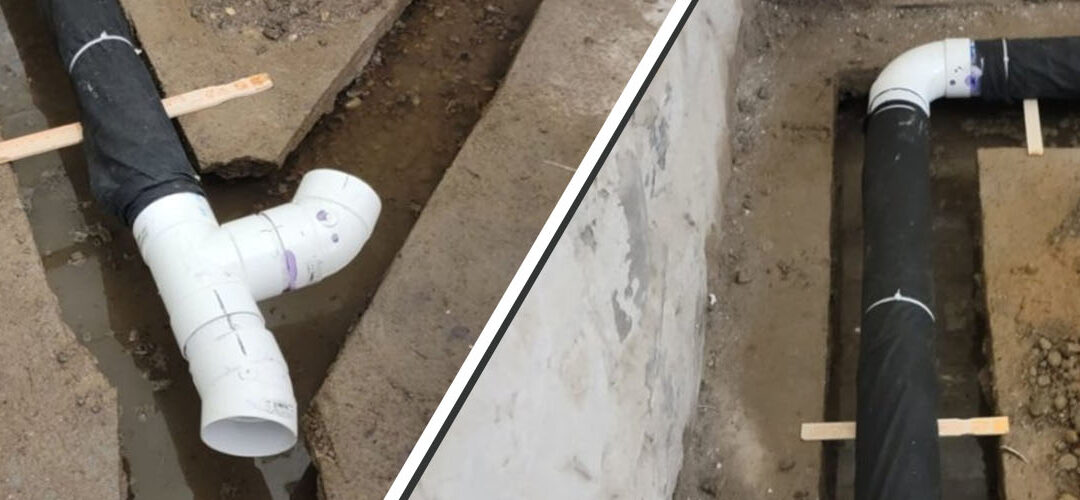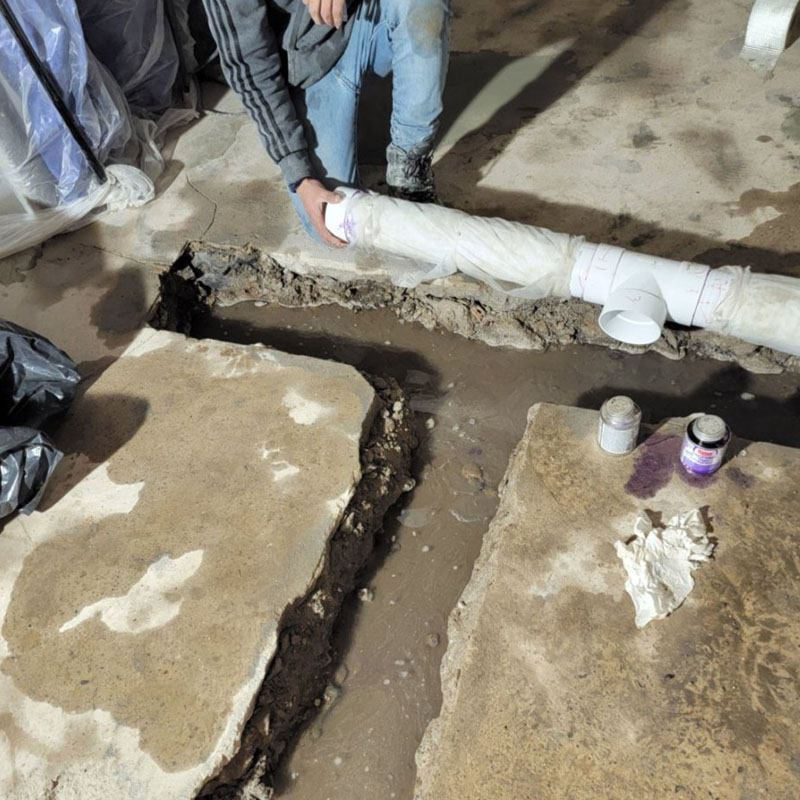If you notice water creeping on the side of your yard that stays or some of it collecting in your basement and Install a French Drain, you need help. And by that, we mean installing a French drain system. A french drain helps you get rid of all the pooling water from your foundation and maintains the integrity of your home.
What is a French Drain?
A French drain appears like a rock waste ditch from the outside and, when installed correctly, is a lovely hardscaping element. A drain pipe directed to move water far away from the house is in that gravel. You can see a French drain on your property by looking for the exposed pipe end on the incline.
Water cannot collect in the hole because every element of the French drain allows water to travel away. So this water flows through the holes in the perforated pipe and the gravel or stone. The pipe is covered with landscaping fabric, restricting weeds, dirt, and other waste from blocking the openings while allowing water to flow through the tube.
Benefits of a French Drain
French drains regulate water at ground level, while gutters catch precipitation as it drips off the roof. So if you worry about water collecting in a specific low area of your land after a rainstorm, you can solve the issue by rerouting the water’s flow using a French drain.
A French drain system also offers a solution for ” wet ” basements where water presses up against the foundation and slowly seeps through. However, water near the foundation can divert and flow somewhere else via a French drain.
You may need to lodge a French drain indoors if water seeps into your basement despite apparent good outdoor drainage. To install, you will have to dig a trench in the basement slab along the foundation’s edge, the pipe must be laid in the channel, and a sump pump must be installed to transfer water from the inside to the exterior.
How to Install a French Drain?
It’s simple to learn how to install a French drain. A few essential ingredients and simple gardening tools are required to finish this project. It’s crucial to find out whether your municipality needs a permit for French Drain Installation before you start installing your French drain. Even though French drains are permitted in most neighborhoods, some do not, particularly those close to wetlands and other sensitive areas.
1. Make a “French trench” first.
A French drain operates on the same logic whether installed in the basement or the yard. The first step is to dig a drainage trench that slopes in the desired direction for the water. Typically, a slope of 1 inch is advised for every 8 feet of length. Use a level string secured between two stakes to determine the correct angle, and then measure the distance from that point to the bottom of the trench.
Your trench needs to be at least 12 inches wide because the relative efficacy of a drain pipe directly correlates with its diameter. It would help if you aimed for 18 to 24 inches in depth.
2. Add gravel.
After digging your trench, fill it with a few inches of gravel or crushed stone with a minimum diameter of 12 inches. Before setting the rocks in place, they should be rough and clean. To prevent weed growth, drape drainage fabric that is permeable to water over the stone.
3. Install plumbing in the trench.
You can use either rigid PVC with predrilled holes or flexible drain pipes with slits in terms of Install a French Drain . PVC lasts longer and can quickly eliminate clogs using pressure or a plumber’s snake. Conversely, a flexible tube is less expensive and more manageable.
Is it choosing PVC? A pipe that can be left poking out of the ground to serve as an accessible clean-out point can be connected to the beginning of your pipeline at a 45-degree angle joint. Regarding PVC installations, it’s also crucial to remember that the pipe holes should be oriented downward. Even though it seems counterintuitive, French drains function by allowing water to flow into them.
4. Fill the trench after wrapping the pipes.
To prevent dirt and tree roots from clogging the system, wrap the pipe in a garden cloth. Lastly, grade the gravel filling the trench. Alternately, fill the space with gravel up to a point a few inches below grade, then cover the remaining area with dirt. Wrapping the pipe makes future maintenance more difficult, but hiding the drain is more aesthetically pleasing.
Call in the Experts
If you don’t have the time to install the french drain yourself, or don’t have the right tools, get in touch with our professional Install a French Drain . Zavza Seal LLC has the right experience and expertise to ease the load off your shoulders and ensure that your foundation remains strong without problems with water penetration.
Related Blog Posts:
Related Services:
Our service areas:
Get A Free Estimate


